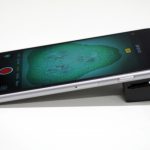 Whilst smartphones themselves have become increasingly capable of monitoring various health metrics, their capabilities have been extended by a growing number of attachable add-ons that can perform a range of scans. The latest of these was recently documented in a paper in Scientific Reports.
Whilst smartphones themselves have become increasingly capable of monitoring various health metrics, their capabilities have been extended by a growing number of attachable add-ons that can perform a range of scans. The latest of these was recently documented in a paper in Scientific Reports.
The device, which was developed by a team from the ARC Centre of Excellence for Nanoscale BioPhotonics (CNBP), consists of a 3D printable clip-on that gives a smartphone microscope-like powers. Indeed, the device is so proficient that it can visualize items as small as 1/200th of a millimetre.
The technology is sufficiently efficient as to not require any external power source to work, whilst still being able to provide high-powered performance in a robust package. What’s more, the device will be made freely available, complete with 3D printing files, so that anyone can turn their own phones into microscopes.
Field science
The team hope that it will have enormous potential as a scientific tool usable in field work and other remote areas where standalone microscopes are either impractical or not available.
“We’ve designed a simple mobile phone microscope that takes advantage of the integrated illumination available with nearly all smartphone cameras,” they say.
The device deviates from existing models in that whilst they require an externally powered light source, their technology utilizes internal illumination tunnels that capture light from the flash in the camera of the phone.
“The beauty of our design is that the microscope is useable after one simple assembly step and requires no additional illumination optics, reducing significantly the cost and complexity of assembly. The clip-on is also able to be 3D printed making the device accessible to anyone with basic 3D printing capabilities,” they explain.
What’s more, the device is also capable of providing both bright-field and dark-field microscopy techniques. This functionality allows scientists to observe samples that are practically invisible under normal bright-field operations.
The team believe the potential of their device are considerable as it provides an inexpensive and portable tool for a variety of on-site or remote area monitoring.
“Water quality, blood samples, environmental observation, early disease detection and diagnosis—these are all areas where our technology can be easily used to good effect,” they explain.
This could be especially so in developing countries where power microscopes are in scant supply, especially in remote or small communities. Yet it’s often in these areas where such a device can be most useful in testing water quality or analyzing blood samples.
By making all of the technology freely available, the team hope that the impact will be enhanced. The ultimate aim is to get the technology used as much as possible. You can download the files for the 3D printing of the clip-on from the CNBP website.